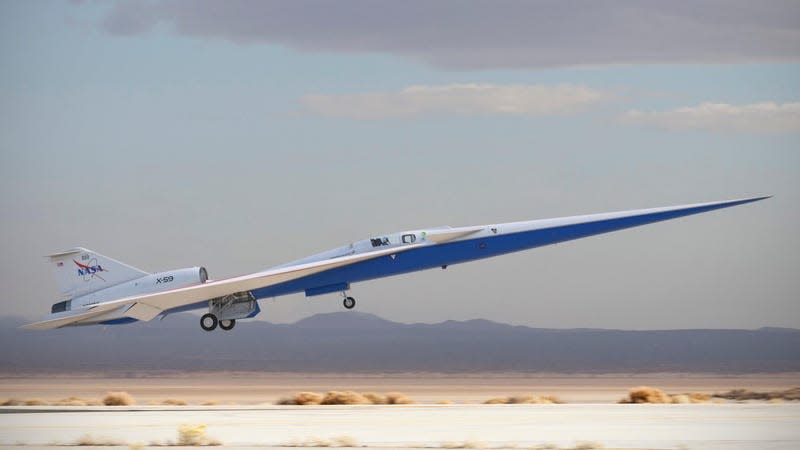NASA Is Aiming To Develop Supersonic Passenger Jets Twice As Fast As Concorde

The NASA Quesst mission’s Lockheed Martin X-59 at take-off
NASA thinks there may be a business case for supersonic passenger air travel at speeds up to Mach 4, perhaps equipped with new technology that would allow overland supersonic routes for the first time.
It’s been twenty years since Concorde’s final commercial passenger flight in October 2003. Since the iconic aircraft’s retirement, no passenger airline has offered supersonic services. NASA’s studies concluded that there are about 50 established routes with potential passenger markets for supersonic services.
Read more
I'm Transfixed By Kevin Costner's Ex-Wife's Arguments for $175K a Month in Child Support
Starfield's Controversial Missing PC Feature Already Modded Into The Game
Celine Dion's Sister Gives Health Update: 'There's Little We Can Do to...Alleviate Her Pain'
Only 1,280 Reproductive Human Ancestors Once Roamed Earth, Gene Study Suggests
NASA gave one of the two 12-month contracts to a team led by Boeing, and the other was handed to a team led by Northrop Grumman. Over the course of the next year, the teams are expected to produce a roadmap for the airframe, propulsion, thermal management and composite materials necessary for high supersonic speeds. The aircraft would be under immense stress while flying at Mach 4 or 3,069 miles per hour. In ideal conditions, Concorde could hold a speed just over Mach 2, twice the speed of sound.
While we likely won’t see the benefits of these projects within this decade, the development work being done now could result in the return of supersonic travel by the late 2030s.
More from Jalopnik
Starfield Chat: Our First Few Hours With Bethesda’s Space Epic
Weary Ridiculousness writers include "please make other shows" in their list of union demands
Texas Republicans Are Targeting Highways Now to Stop Out-of-State Abortions
Sign up for Jalopnik's Newsletter. For the latest news, Facebook, Twitter and Instagram.

 Yahoo Autos
Yahoo Autos 